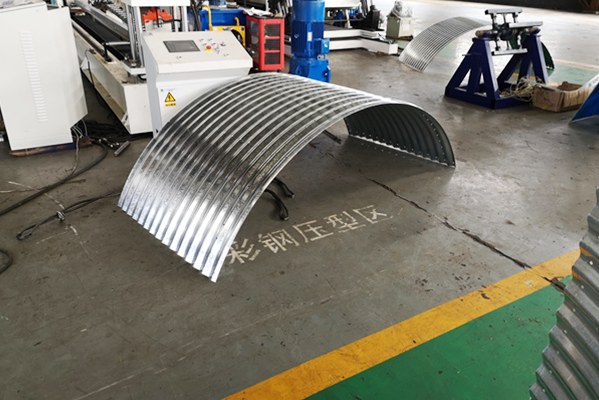Navigation Menu
Contact Us
- Email:
- info@wxavatar.com
- Address:
- Yurong Village, Yuqi Street, Huishan District, Wuxi, China.
Release Date:Mar 15, 2025 Visit:50 Source:Roll Forming Machine Factory
Grain storage containers are essential components of the agricultural supply chain, playing a critical role in preserving the quality and quantity of harvested grains. These containers are designed to protect grains from environmental factors, pests, and spoilage, ensuring that they remain safe for consumption or further processing. With the increasing demand for efficient and reliable storage solutions, grain storage containers have evolved into various types, each tailored to specific needs and conditions. Understanding the different types of grain storage containers and their features is key to optimizing grain preservation and minimizing losses.
Types of Grain Storage Containers
1.Silos
Silos are among the most common and recognizable grain storage containers. These tall, cylindrical structures are typically made of steel or concrete and are used for bulk storage of grains. Silos are designed to protect grains from moisture, pests, and temperature fluctuations. They often feature airtight seals and ventilation systems to maintain optimal storage conditions. Silos are ideal for large-scale farming operations and commercial grain storage facilities.
2.Bins
Grain bins, also known as grain elevators, are another popular type of storage container. These structures are usually made of corrugated steel and come in various sizes, making them suitable for both small-scale and large-scale operations. Grain bins are equipped with features such as aeration systems, temperature monitoring, and moisture control to ensure the longevity of stored grains. They are commonly used on farms and in grain processing facilities.

3.Sacks and Bags
For smaller-scale storage or temporary solutions, grain storage containers such as sacks and bags are widely used. These containers are typically made from woven polypropylene or other durable materials that protect grains from moisture and pests. While sacks and bags are more portable and cost-effective, they are less suitable for long-term storage compared to silos or bins.
4.Hoppers
Hoppers are specialized grain storage containers designed for easy loading and unloading of grains. They are often used in transportation and processing facilities, where grains need to be moved quickly and efficiently. Hoppers are typically made of steel and feature a funnel-shaped bottom that allows grains to flow out smoothly.
5.Flat Storage Structures
Flat storage structures, such as warehouses or sheds, are another option for grain storage. These facilities provide large, open spaces for storing grains in bulk. While they offer flexibility in terms of capacity, flat storage structures require additional measures, such as proper ventilation and pest control, to maintain grain quality.
Key Features of Grain Storage Containers
Airtight Seals: Prevent moisture and pests from entering the container.
Ventilation Systems: Regulate temperature and humidity to prevent spoilage.
Durable Materials: Ensure long-term protection against environmental factors.
Monitoring Systems: Enable real-time tracking of grain conditions.
Ease of Access: Facilitate efficient loading and unloading of grains.
Applications of Grain Storage Containers
Grain storage containers are used in various settings, including farms, grain processing facilities, and transportation hubs. They are essential for preserving grains during periods of surplus, ensuring a steady supply during times of scarcity. Additionally, these containers play a vital role in international trade, where grains must be stored and transported over long distances without compromising quality.
Grain Storage Containers: Safeguarding the Future of Agriculture
In conclusion, grain storage containers are indispensable tools in modern agriculture, providing reliable solutions for preserving and managing harvested grains. From silos and bins to sacks and hoppers, each type of container offers unique advantages tailored to specific needs. By investing in high-quality grain storage containers, farmers and agricultural businesses can minimize losses, maintain grain quality, and contribute to global food security. As the demand for efficient storage solutions continues to grow, grain storage containers will remain a cornerstone of sustainable agriculture and food production.